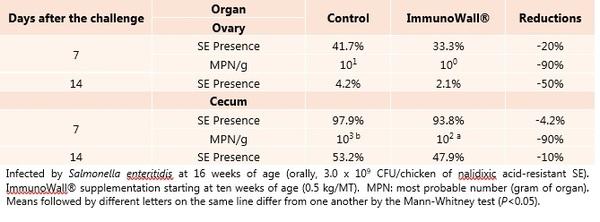Recently, news about food companies that are opting to consume cage-free eggs is becoming more frequent. The cage-free system honors the concept of animal welfare advocated by the OIE (World Organization for Animal Health). It also has been addressed in meetings of organizations around the world that encourage discussing the topic to clarify and direct an agreement between all those involved. In this production model, there is no cage confinement and all conditions must be favorable, so the birds are kept dry and protected. The animal well-being is paramount and, as a result, the chickens can express their natural behaviors, like laying their eggs in nests.
According to the Farm Animal Welfare Committee (FAWC), a British advisory agency, the concept encompasses five essential freedoms that must be met for an animal to be "protected from unnecessary suffering." This requires the animal to be free from hunger and thirst; free from discomfort; free from pain, injury or disease; free to express normal behavior and, finally, free from fear and stress.
Although this concept is still recent and poorly disseminated among Brazilian producers, organizations like the Ministry of Agriculture, Livestock, and Supply (Mapa) and the Brazilian Association of Animal Protein (ABPA) hold discussions about the conversion from conventional systems to cage-free systems. Countries such as New Zealand, Bhutan, all the European Union members, and seven states in the U.S.A. have already banned the use of conventional battery cages for laying hens. India is the world's third-largest egg producer and is also considering a national ban.
In Brazil, more than 50 food-sector companies have pledged to buy cage-free eggs. At the beginning of the year, the Cooperativa Central Aurora Alimentos announced a commitment to using 100% cage-free eggs in their supply chain by 2025. So far, more than 200 large multinational companies, including McDonald's, Giraffa’s, Burger King, Subway, Bob's, Spoleto, Disney, Kroger, Campbell Soup, Walmart, ConAgra, Starbucks, and White Castle have announced that they have joined the cause and will switch to using cage-free system eggs, most by the year 2025.
The impact on the poultry market is inevitable and is felt by egg producers and researchers seeking to preserve the advances in health and food safety that have been achieved within the cage-free system during recent years. Taking this into account and along with this evolving change, there is concern about the intensive antibiotic-free production which has become an emerging issue, because the risks and consequences of this cage-free production system are not fully known.
This health and safety challenge remains a complex reality that must be considered. Reducing or taking antibiotics out of diets and therapy directly impacts animals health.
Moreover, implementing a rigorous health plan is essential, because transmission can occur through food, environment or even vertically, i.e., from the breeder to the progeny via the eggs.
Eggs are considered to be one of the main causes of Salmonella food contamination. According to the World Health Organization (WHO), each year about 600 million, or almost 1 in 10 people in the world, get sick after consuming contaminated food. In Brazil, from 2007 to June of 2016, 90.5% of food poisoning cases were caused by bacteria, and the most frequently found serotypes were Salmonella spp. (7.5%), Escherichia coli (7.2%), and Staphylococcusaureus (5.8%). Therefore, offering eggs to final consumers derived from a cage-free system with no Salmonella will be one of the biggest challenges for the poultry industry.
Companies are mobilizing to adapt to this new reality, to understand consumer demands, and at the same time, to evolve their production methods to meet bird and consumer health challenges.
For years, ICC has invested in scientific research to develop yeast-based solutions, and the company believes that food safety begins with feed additive products used in the field, i.e., those that go into commercial animal diets. Based on this idea, ImmunoWall® stands out among the other products on the market because it is composed of a dense cell wall of Saccharomyces cerevisiae yeast with high β-Glucans and MOS concentrations, resulting in an additive with guaranteed results and an excellent cost/benefit ratio.
MOS can agglutinate pathogenic bacteria that have type 1 fimbriae, such as E. coli and Salmonella, which prevent the colonization and proliferation of these populations in the intestine. β-Glucans stimulate macrophage production and activity. Macrophages are defense cells that have an essential role in the immune system and are capable of phagocytizing and destroying microorganisms.
The extensive agglutination capacity of ImmunoWall® is efficiently proven by in vitro assays with more than 200 evaluations in recent years (Table 1).
Table 1. Agglutination history of Salmonella and E. coli strains
1Complete Evaluation: 60 Salmonella Strains and 20 Escherichia coli Strains.
*Mycological Research Laboratory (LAPEMI) at the Federal University of Santa Maria – UFSM, Brazil.
ImmunoWall® supplementation guarantees that birds maintain an intestinal microbiota balance and improve their immune system response, reducing pathogenic bacteria contamination and preventing their transmission to other organs of the body. For the first time in an in vivo experiment, the study published by Hofacre et al. (2017) demonstrated the effectiveness of a yeast-derived product in reducing the colonization and presence of Salmonella enteritis (SE) in the ovary and cecum of commercial hens. Table 2 shows that commercial hens contaminated with high dose SE and fed with ImmunoWall® supplemented diets (0.5 kg/metric ton) presented a reduction in the SE colonization of the intestines and ovaries when compared with the control group (at 7 and 14 days after the beginning of the challenge).
Table 2. Results summary of the Hofacre et al. (2017)studyon reducing the Salmonellaenteritidiscontamination in commercial hens fed diets with Immunowall®.
The reduction of cecum colonization is an important factor related to food safety because it will, consequently, reduce fecal contamination on the egg surface. After egg laying, cooling starts and bacteria on the surface of the egg penetrate through shell pores; in other words, the lower the surface contamination, the lower the contamination is inside the egg.
The cage-free system has emerged as a new concept in egg production, but it still has many challenges to face. For the system to be effective, it is fundamental to implement biosafety management combined with products that control pathogens. ImmunoWall®, in addition to being a 100% natural additive, is a viable low-dose solution to improve intestinal health and reduce egg contamination, providing greater food safety and resulting in an excellent cost/benefit ratio.











.jpg&w=3840&q=75)